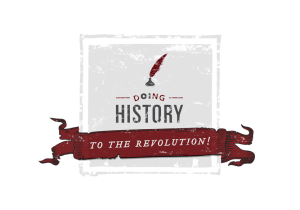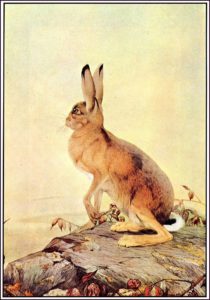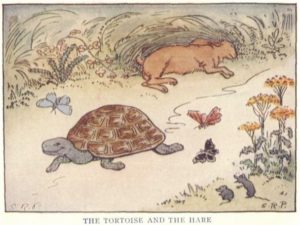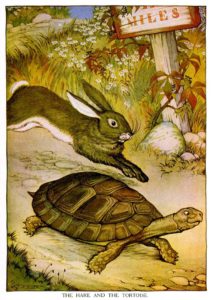I define a “native audio history” as a narrative work of scholarly history created and produced in audio. It is a work that considers and presents sounds that evoke the past as well as the sounds that produce history. When I hear this genre, I hear the archives and intellectual production of history as an integral part of the presentation. It’s a genre that answers the whys and hows of history.
Professional Website, v. 4.0
A tour of the fourth iteration of my professional website.
Welcome to my new website!
A website represents your home on the web. It’s where people come to learn more information about you and where you have the opportunity to convey the image and message you want to the world.
I really loved my old website, but I needed a change. It felt dated (it was three and half years old) and as the third iteration of my original website, it no longer conveyed the image and message I want to convey to the world.
Writing Early American History with Sound
 On April 18, 2017, a new preview episode of the Doing History: To the Revolution! series will post on Ben Franklin's World. It will be my most creative episode yet because it tells a story and uses sound to enhance the story I'm telling. The Omohundro Institute posted a piece I wrote about thinking through how to use sound to convey history on it's blog, Uncommon Sense.
I've been thinking a lot about horses. Specifically, what a Narragansett Pacer mare would have sounded like galloping on a dirt road in mid-April in the dead of night.[1]
On April 18, 2017, a new preview episode of the Doing History: To the Revolution! series will post on Ben Franklin's World. It will be my most creative episode yet because it tells a story and uses sound to enhance the story I'm telling. The Omohundro Institute posted a piece I wrote about thinking through how to use sound to convey history on it's blog, Uncommon Sense.
I've been thinking a lot about horses. Specifically, what a Narragansett Pacer mare would have sounded like galloping on a dirt road in mid-April in the dead of night.[1]
If I were a bystander, I might hear the faint noises of the labored breathing of the horse, the muffled commands of its rider, and a gallop that would all increase in volume until it peaked when I saw the horse and rider go by and heard its tack jingle. Then all of those sounds would fade into the distance as the horse made its way down the road.
If I were riding the horse, I'd hear the horse galloping on the dirt road differently. The horse's labored breathing, hoof beat, and tack jingle would be constant sounds in my ears. I'd also likely hear my clothes rustling in the wind created by our movement, if I listened to my experience fully.
The weather would also dictate the sounds I'd hear. Horses galloping on dry, dirt roads sound different than those galloping on wet, muddy roads. Plus, wind would make the dead of night seem alive. Instead of hearing the quiet stillness of the night, I'd hear the rustle of leaves and branches.
I've put a lot of thought into what will likely amount to about 10-20 seconds of audio in my next narrative-style podcast episode, "Paul Revere's Ride Through History," which will air as the next teaser episode of the Ben Franklin's World-Omohundro Institute's "Doing History: To the Revolution!" series on April 18, 2017.
How Do You Write a Book with 3 Hours Per Week?
 Last week I had the opportunity to spend some time at the Omohundro Institute. In between planning sessions for the new "Doing History: To the Revolution!" series, I caught up with friends and colleagues, some of whom asked me whether I had any time to pursue original research and whether I was still working towards a book.
I responded that "yes, I'm still working toward a book." Actually, I'm working toward two books. It seems the Articles of Confederation is a great topic to think through the same themes of identity, nation building, and conflict resolution that I worked on in my dissertation. My dissertation may, in fact, become a book after all.
Last week I had the opportunity to spend some time at the Omohundro Institute. In between planning sessions for the new "Doing History: To the Revolution!" series, I caught up with friends and colleagues, some of whom asked me whether I had any time to pursue original research and whether I was still working towards a book.
I responded that "yes, I'm still working toward a book." Actually, I'm working toward two books. It seems the Articles of Confederation is a great topic to think through the same themes of identity, nation building, and conflict resolution that I worked on in my dissertation. My dissertation may, in fact, become a book after all.
As I spoke with my colleagues about my projects and excitedly told them about my plans one stopped me and asked: "how do you plan to write a book with only 3 hours a week to work on it?"
The question is a good one and one I'm pondering. How do I plan to finish a book and write a second one when the only time I can set aside consistently to work on them is 3-4 hours on Sunday mornings?
In graduate school, I asked my professors about how they write and about their workflows; communications and optimized workflows are topics that interest me. All of them said they find 1-4 hours each day to write. I still ask these questions of colleagues and the most prolific of them give the same answer.
I don't have 1-4 hours each day to devote to my written scholarship. Most days I find it difficult to set aside the hour I need to practice yoga or run--activities I find necessary for stress relief and mental health. Plus, the fact that I write about history in three different mediums is problematic. Each medium has it's own voice and ends. When I'm writing in audio my brain works differently. It's hard to think about writing and editing long form text when I'm actively engaged in audio work. Plus the voice I use in my audio work is not the same voice I would use in long form text.
I may not have 1-4 hours per day, but I do have Sunday mornings. Most Sundays I can work for at least 3 hours before my family gets up and moving for the day and before I have to turn to the work that exceeds the bounds of a sane work week. I also have occasional snippets of time on non-audio days where I can draft short blog posts like this one.
Can I write a book by writing it as a series of blog posts?
Some fiction authors do this, they write their books in the form of serialized blog posts. You see this most commonly on the social networking site wattpad. But would this serialized-blog-post model work for a history book?
Blog posts and history books have different voices. Blog posts tend to have an informal tone that makes use of contractions, casual word choice, and the first person. I've yet to read a scholarly history book with the tone and voice of blog writing.
Blog posts are also public. Publishers want authors to reserve their best content for their books so they can give readers a great reason to purchase them. If I write my books adopting a blog workflow, I won’t be able to publish everything I write on my blog.
Blog posts and history books also serve different functions. Blog posts tend to be short, one-offs where writers present and work through an idea. History books usually present multiple, complex ideas by working through long, detailed stories and examples. The intellectual production that goes into a book is much different from the intellectual production that goes into a blog post.
To get back to my colleague's question, I don't know how I plan to write a book, or two books, with 3 hours per week to work on them. I don't know how to turn short-form thinking into long-form thinking just yet. Still, it seems like I will need to adopt and adapt the blog-post method of book writing to my practice of history if I intend to write books. And as much as I love new media, I love the old. I want to write books about the BIG histories I think about and I want to contribute to the historiography in a meaningful way. I also know that I have what it takes to be a good "book historian" and I want to prove it.
Some day I will finish my books and they will be the books I want to write and they will be books that contribute. I just have to figure out how to get them done. I will solve this problem. In the meantime, with the exception of feeling like I should have written a book by now, I have no regrets about taking the career path less traveled. I have the privilege of increasing awareness about history and the work historians do by connecting historians to a public who is both interested in and thirsty for their work. Every day I get to help demonstrate why history matters and showcase the value of historians' work to society. And I get to do it all by writing history in and for new media.
With Digital Content Creation, the Tortoise Will Win the Race
 I don't get SnapChat. Why would you spend time creating content that people can only access for a limited period of time?
I shared this musing on Twitter and enjoyed exchanges that culminated in the fact that I'm old.
I don't get SnapChat. Why would you spend time creating content that people can only access for a limited period of time?
I shared this musing on Twitter and enjoyed exchanges that culminated in the fact that I'm old.
I may be a first-year millennial (I did in fact graduate high school in the year 2000), but I'm a member of the "Oregon Trail" part of the generation. The part that embraces new technology and still appreciates what came before it. I'm also a member of a profession that still lauds the book as the ultimate form of scholarly production. Books vary in quality, but they all take time to produce.
In the world I grew up in and the world I work in, it takes time and energy to produce content and preserve memories. These ideas and experiences shape the way I think about digital content and how it should be produced. They also make me a tortoise living and running in a hare's world.
The "Hare Approach" to Content Creation
 In comparison, "real" millennials and "post-millennials" have grown up using smartphones, tablets, apps, and hardware, like Snap's Spectacles, to easily create digital content. As a childhood friend pointed out, "now, basic content creation is nearly effortless." You can create content and preserve a memory in seconds.
In comparison, "real" millennials and "post-millennials" have grown up using smartphones, tablets, apps, and hardware, like Snap's Spectacles, to easily create digital content. As a childhood friend pointed out, "now, basic content creation is nearly effortless." You can create content and preserve a memory in seconds.
We live in a world full of digital content, but most of it's created quickly and it's not very good: bad blog posts, blurry photos, mundane status updates, and shaky videos. This mediocre content clogs the internet and means something only to those who created it and to those who understand the context of its creation.
Thinking about SnapChat within the context that content creation should be easy and effortless is when SnapChat started to make sense to me: The social app caters to people who want to create fast, effortless content. And thinking about SnapChat in this light has allowed me to appreciate how Snap may be doing our digital world a great service by making low-quality, hastily created content available only for a short period of time. Less clutter means more space for the great stuff to shine.
But what does the idea of creating fast, easy content on-the-go mean for the future of content creation? Has my belief that historians and other digital content producers should expend effort to produce high-quality, well thought out content become outmoded?
Should I morph into a hare?
I don't think so, at least not yet.
The "Tortoise Approach" To Content Creation
 If my ideas about content creation were outmoded then Amazon, Netflix, HBO, and now Apple wouldn't be investing HUGE sums of money in the production and curation of high-quality, niche programs like Game of Thrones.
If my ideas about content creation were outmoded then Amazon, Netflix, HBO, and now Apple wouldn't be investing HUGE sums of money in the production and curation of high-quality, niche programs like Game of Thrones.
All of these companies are producing high-quality shows unlike anything you can see on a traditional network to draw people to their subscription-based, digital content libraries. And if you're like me, you enjoy programs like Game of Thrones more than the programs on network television because of their production value. They involve many characters, have huge story arcs, and contain great special effects (hello, real-looking dragons & dire wolves). These high-quality shows also aren't beholden to the traditional time clock of network television-- episodes don't have to adhere to 30- and 60-minute time slots.
And premium digital networks aren't the only ones investing time and money into highly-produced content. Masterpiece Theater produces shows of similar quality for PBS. Think Downton Abbey, Victoria, and Poldark. They have less special effects than a show like Game of Thrones, but they all have high-quality production.
It's also interesting to compare the types of content networks are producing. HBO produces content like Game of Thrones and TrueBlood to appeal to fantasy lovers. People accustomed to good stories and who have a track record of paying for merchandise, books, games, and content. Masterpiece Theater's main goal is to drive people to support public broadcasting. They mainly produce mysteries and history-inspired programs. People who like history tend to enjoy culture, are civic-minded, and they have a track record of donating money to support the work of organizations like PBS and NPR.
Video-based content companies and companies that service digital video apps aren't the only companies investing in high-quality, digital content. So are traditional news outlets like The New York Times, The Washington Post, and NPR.
The New York Times and The Washington Post have publicly declared that they are redoubling their efforts to produce well-researched, long-form articles to differentiate themselves from other news outlets. They're banking on the fact that high-quality content will drive ad sales and subscriptions. They've also started audio divisions to lead people to their print content and to advertise their areas of expertise-- The Washington Post specializes in political podcasts; The New York Times produces podcasts about culture and they just released The Daily, a podcast that focuses on a big news story and leads you to its printed or digital newspaper.
NPR is also investing money in high-quality podcasts. The powerhouse networks that feed a lot of content to the national NPR network-- WBUR (Boston), WNYC (New York City), and WBEZ (Chicago)-- all have podcast and mobile divisions to produce apps like NPR One and great shows like Modern Love, Death, Sex, & Money, and Serial. Further, NPR-trained talent has started a whole host of new venture-funded podcast companies like Gimlet and Pineapple Street Media.
These new digital audio companies were founded to produce high-quality, on-demand audio content. Their funding models are based on three ideas:
1. High-quality, intellectually-driven content attracts listeners that advertisers will pay a premium to get access to because host-read podcast ads aren't yet regulated by the FCC, which means ads don't have to sound like ads, and the listeners the intellectually-driven content attracts tend to have disposable incomes.
2. If you have enough high-quality content, listeners will pay to access a back catalog like a subscription network. (These paid-subscription models are just starting to appear and will become more visible as these networks add to their content catalogs.)
3. Big companies recognize the value of high-quality content and are willing to pay networks to create custom content for them--like Open for Business by eBay, produced by Gimlet, and GE's podcast The Message, produced by Panoply.
Why the Tortoise Will Win in History Content Production
 Tortoises like me live in a hare's world. We look slow and outmoded in the way we produce digital content. But our goals are different from those of the hare.
Tortoises like me live in a hare's world. We look slow and outmoded in the way we produce digital content. But our goals are different from those of the hare.
In my case, I want to create content that resonates with people, that creates wide awareness about history, and that cultivates a sentiment within society that history and the work historians do is worth supporting. I'm, in fact, running a tortoise's race. So my ideas aren't outmoded, they're timely and they make sense.
I believe there is a place for the hare's content. Photos and images created quickly with smartphones are fun to produce and share. However, the hare's content won't build a lasting audience. Within the last decade we've seen Twitter, Facebook, and Instagram content producers who quickly built massive audiences only to watch those audiences dwindle and leave as new apps and social networks came out and interests changed. The quick and easy content they produced entertained only for a limited time.
History has staying power. People will always be interested in history because it helps us grapple with the big, existential questions of who we are and how we came to be who we are. This is why historians have always invested time and energy into producing content that lasts: books, articles, museum exhibits. And this tried-and-true method of investing time and effort in the content we produce should also be our approach in the digital world.
We should embrace the hare, borrow everything from its technological toolbox that will help us communicate history, and then adapt these tools to amplify our work. Because just like in the analog world that came before the digital world, quality work will rise to the top, be consumed by more people over time, and will last-- just like tortoises, which live an average of 200 years versus hares, which live an average of 5.5 years.


